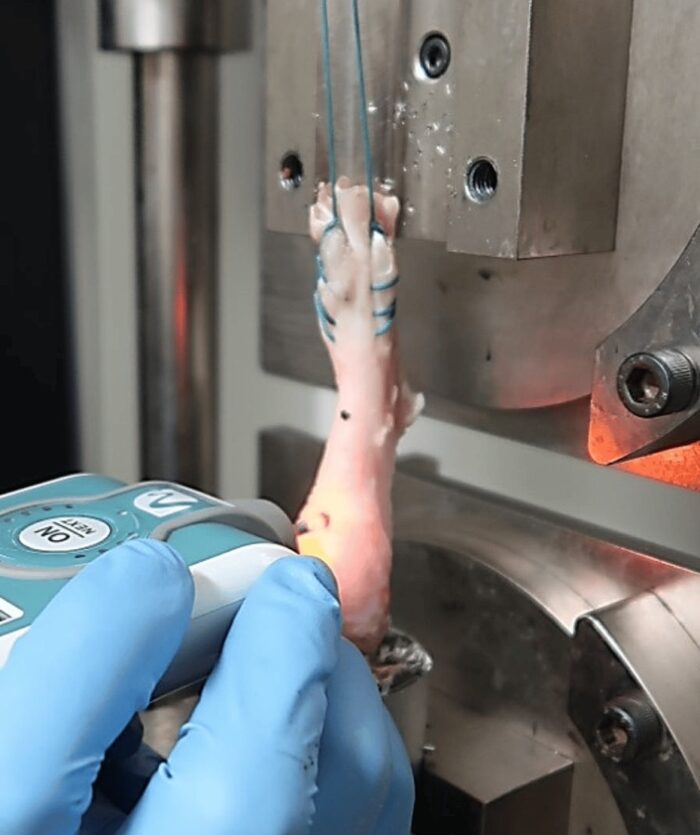Publications

Relationship Between Achilles Tendon Stiffness Using MyotonPRO and Translation Using a Tensile Testing Machine: A Biomechanical Study of a Porcine Model
Authors: Wataru Kurashina 1, 2, Tsuneari Takahashi 3, Hideyuki Sasanuma 4, Akihiro Saitsu 4, Katsushi Takeshita 4
Affiliations:
- Graduate School of Medicine, Jichi Medical University, Shimotsuke, JPN
- Department of Rehabilitation, Tochigi Medical Center Shimotsuga, Tochigi, JPN
- Department of Orthopaedic Surgery, Ishibashi General Hospital, Shimotsuke, JPN
- Department of Orthopaedics, Jichi Medical University, Shimotsuke, JPN
Journal: Cureus - November 2023, Volume 15, Issue 11, Article no. e49359 (DOI: 10.7759/cureus.49359)
-
Field & Applications:
- Medical
- Sport
- Animal studies
- Orthopedics
- Musculoskeletal disorder
- Validity
Background: Achilles tendinopathy is a common ankle disorder in both the general population and athletes. This condition can alter the mechanical characteristics of the Achilles tendon (AT) by decreasing tendon stiffness. Achilles tendinopathy is primarily treated conservatively; however, few monitoring tools exist for evaluating the condition of the AT. The MyotonPRO (Myoton AS, Tallinn, Estonia) device is a handheld tool used to evaluate tissue stiffness. However, no basic studies have examined the validity of MyotonPRO for assessing the AT. This study aimed to assess the validity of MyotonPRO using animal ATs and to examine its clinical applicability.
Methods: We used 28 fresh porcine ankles and evaluated AT stiffness at the calcaneus insertion site (AT0) and 2.0 cm above the calcaneus (AT2) using MyotonPRO. We also measured changes in the AT length using a tensile testing machine during the cyclic loading test. We investigated the correlation between dynamic stiffness and length change. Furthermore, we assessed the difference in stiffness between AT0 and AT2.
Results: The dynamic stiffness was 717.6 ± 183.1 N/m at AT0 and 467.4 ± 152.3 N/m at AT2. The change in length during the cyclic loading test was 1.8 ± 0.7 mm. The correlation between dynamic stiffness and length change was as follows: AT0, r=-0.61; AT2, r=-0.64 (P<0.001). The dynamic stiffness at AT0 was significantly greater than that at AT2 (P<0.001).
Conclusions: AT assessment using MyotonPRO has potential clinical utility as an indicator of tissue stiffness.

Figure 3. Procedure figure: MyotonPRO measurements at the insertion site of the Achilles tendon into the calcaneus
Keywords: objective assessment, stiffness, porcine, achilles tendon, biomechanics
Dynamic stiffness, measured using MyotonPRO, significantly correlated with length change, measured using a biomechanical machine, at AT0 and AT2. A significant difference in tissue stiffness was observed between AT0 and AT2 when MyotonPRO was used. MyotonPRO can be applied clinically to evaluate AT stiffness. Further research is required to monitor and manage tendon injuries in animal models and humans.


